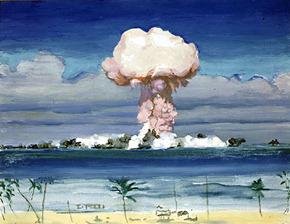 Every entrepreneur dreams of that sweet spot in the life of their business when it will reach critical mass, and they can focus more on scaling it than finding another investment round, or pumping in more cash. The challenge is how to recognize the point where the business is self-sustaining and stable, rather than spinning out of control at the slightest glitch.
Every entrepreneur dreams of that sweet spot in the life of their business when it will reach critical mass, and they can focus more on scaling it than finding another investment round, or pumping in more cash. The challenge is how to recognize the point where the business is self-sustaining and stable, rather than spinning out of control at the slightest glitch.
In fact, in the last decade, the whole concept of a business critical mass has been sent into a tailspin. It used to be simple – when your business became cash-flow positive, it had achieved critical mass. Then came the advent of social media companies like Facebook and Twitter that declared a critical mass with no revenue, counting on their user base of millions of people to get them market values in the billions of dollars.
Now most entrepreneurs are confused. Should they focus on revenues and profitability, or focus on growing their customer base at all costs? In my view, the pendulum is swinging back, meaning that while the size of your following and customer base is valuable, most investors are looking for the old-fashioned indications of critical mass in a new venture, like the following:
- Your business is living off internally generated cash. When cash-flow positive, there are profits to put in the bank or invest back in the business. In fact, you are able to invest in the business, even explore new avenues to grow, without always putting your business in jeopardy.
- Margins and revenue are healthy. Exact margins depend on the business model, but most companies at critical mass must generate a gross profit margin of at least 55%, and an operating profit margin of at least 20%, and have been doing it for a year. Critical mass also usually implies an annual revenue stream of at least $1 million.
- Low customer churn and employee turnover. Productivity is critical to enhanced profitability, and you can’t get productivity if you are continually churning customers, and hiring new people who need experience and training to be productive. Productivity is measured in ratios like cost of customer acquisition and revenue per employee.
- High energy level everywhere for and in the company. The idea, direction, and business must be obviously inspiring the team to evangelize the offering, not because they are highly compensated, but because they are believers. You have critical mass you’re your customers are your greatest evangelists.
- Brand engagement is evident and widespread. Today’s customers want to know the brand, and you are the brand in a startup. You need to have established interactivity, visibility, and credibility with your customers. When your level of engagement is widely recognized, it spreads virally, and you have a critical mass.
While the last three of these are always relevant, some analysts and investors, like Jason Calacanis, are arguing that customer scale these days can trump revenue as the critical mass. Of course, this only works if funding is not an issue, and you are prepared to spend $50 million to get 100 million users. In my opinion, most investors still view this model as the exception, and don’t recommend Twitter as a role model other startups.
I realize that there are businesses today, like web services and social media, that are hard to monetize at all until you have an audience of scale. In all businesses, scaling is important, but the question is whether it comes before critical mass or after. For either to work, it better be part of your strategy to fit both your levels of commitment and funding from the start.
Overall, every new business is much like any investment that accrues compound interest over time. Your level of engagement, network, product quality, and customers all gather momentum to help you reach that critical mass. Your team has to be more productive, your quality better, and you need to make the right decisions to build this momentum.
Finally, don’t fool yourself into thinking you can relax when you reach this critical mass point. Now comes the real challenge of scaling the business return. That will probably require more time and more money, and will continue indefinitely. There is no end to the fun and the challenge for an entrepreneur!
Marty Zwilling

